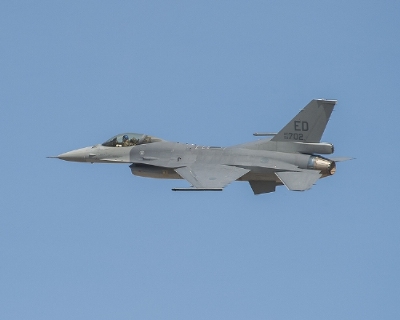
FORT WORTH, Texas, Oct. 21, 2015 /PRNewswire/ — Lockheed Martin (NYSE: LMT) successfully completed the maiden flight of the F-16V, the latest and most advanced F-16 on the market today. The October 16 flight marks the first time an F-16 has flown with Northrop Grumman’s advanced APG-83 Active Electronically Scanned Array (AESA) Scalable Agile Beam Radar (SABR), which will deliver a quantum leap in capability for the venerable F-16.
The F-16V “Viper” advanced avionics configuration also includes a new cockpit Center Pedestal Display, a modernized mission computer, a high-capacity Ethernet data bus, and several other missions systems enhancements that collectively add significant combat capabilities to address the dynamic threat environments emerging in the coming decades.
“This flight marks a historic milestone in the evolution of the F-16,” said Rod McLean, vice president and general manager of Lockheed Martin’s F-16/F-22 Integrated Fighter Group. “The new F-16V configuration includes numerous enhancements designed to keep the F-16 at the forefront of international security, strengthening its position as the world’s foremost combat-proven 4th Generation fighter aircraft.”
The F-16V, an option for both new production F-16s and F-16 upgrades, is the next generation configuration that leverages a common worldwide sustainment infrastructure and provides significant capability improvements to the world’s most affordable, combat-proven multi-role fighter.
Northrop Grumman’s APG-83 SABR AESA fire control radar provides 5th Generation air-to-air and air-to-ground radar capability. Northrop Grumman also provides AESA radars for the F-22 Raptor and F-35 Lightning II.
With more than 4,550 F-16s delivered to date, the F-16V is a natural step in the evolution of the world’s most successful 4th Generation fighter.
For additional information, visit our website: lockheedmartin.com/f16
Daphné Savard occupe le poste d’administratrice du site ou webmestre ainsi que celui de responsable des relations avec les annonceurs et les lecteurs.
Commentaires